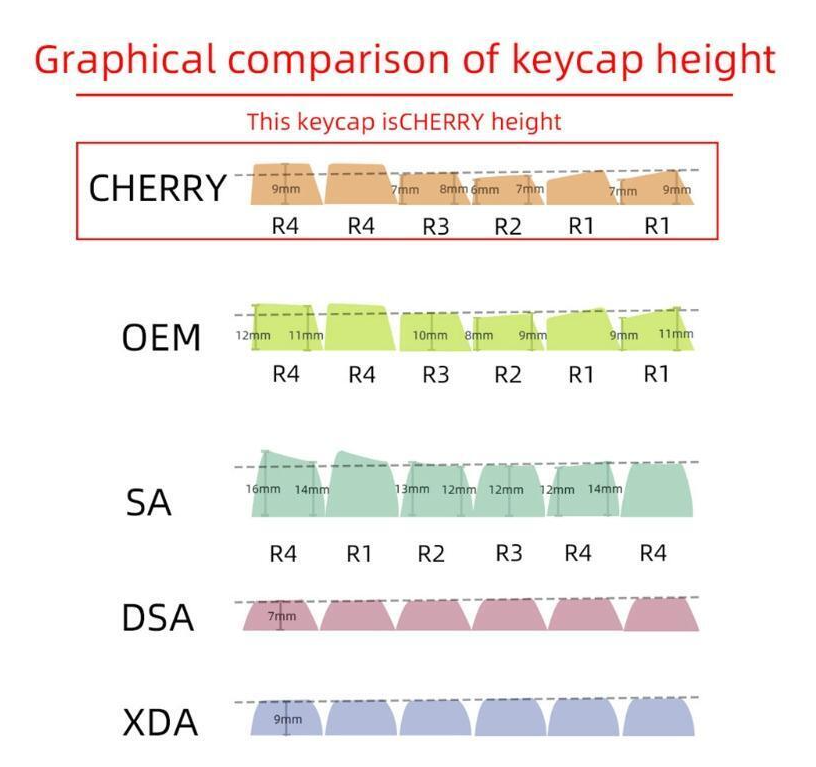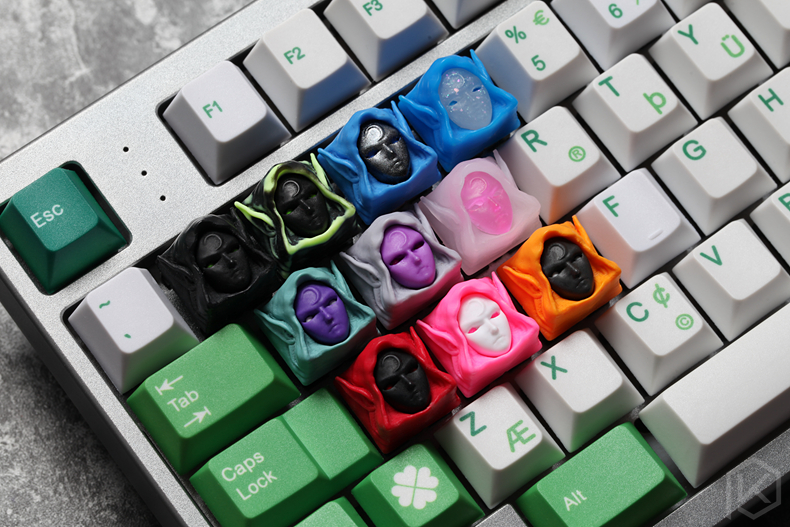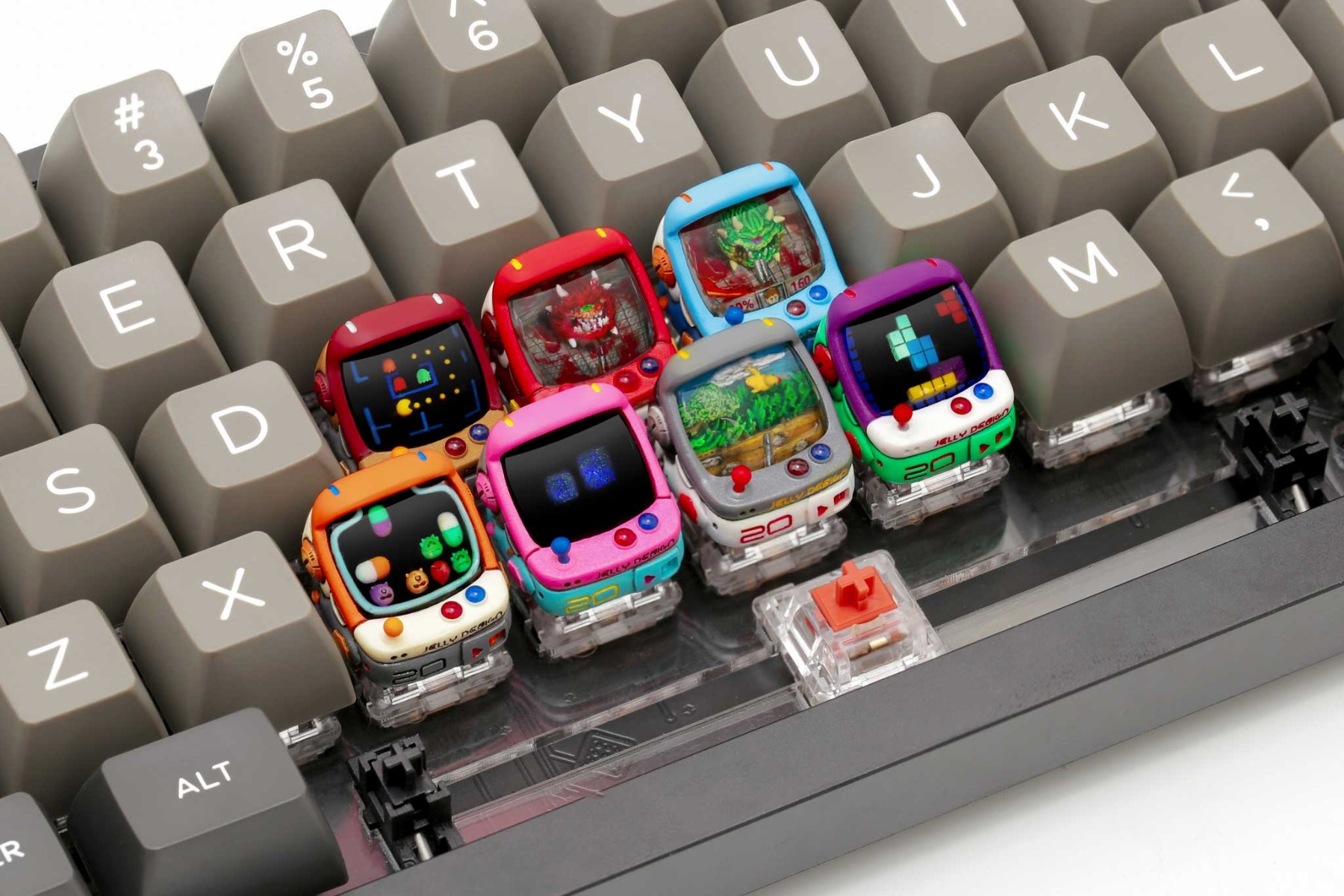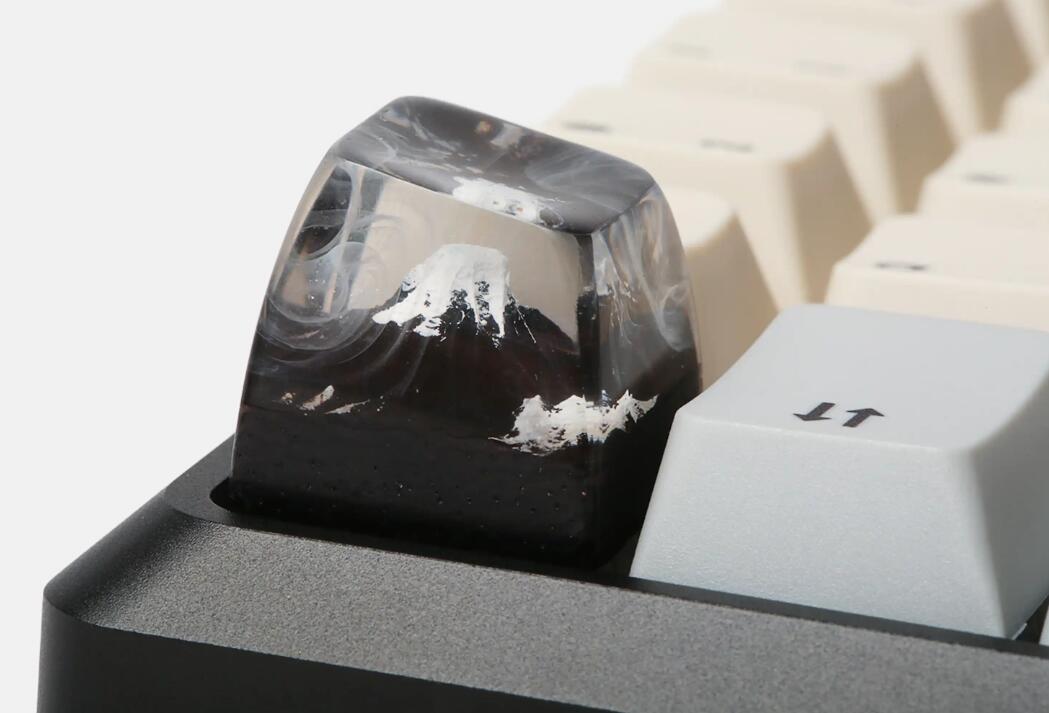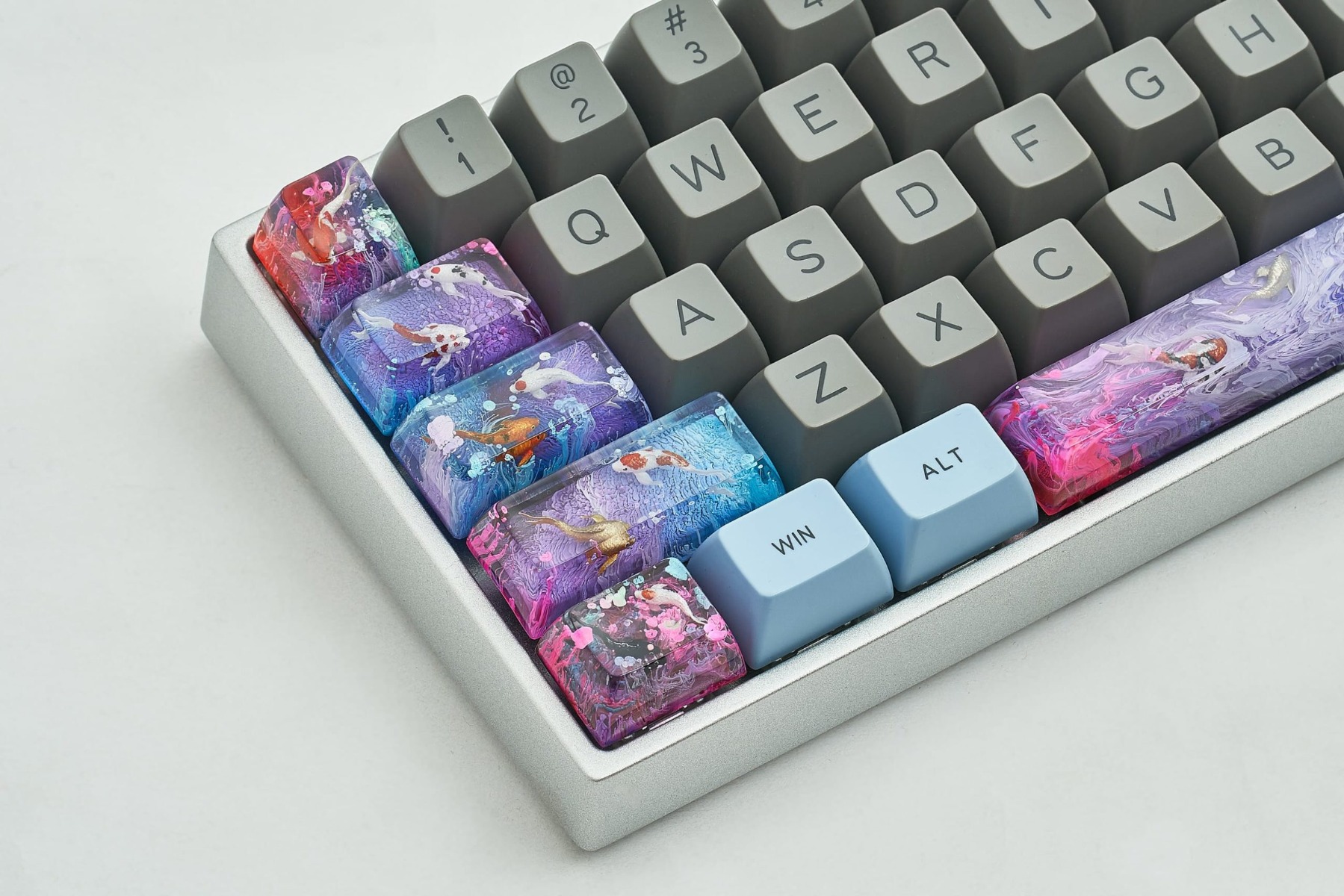Best Guide for Mechanical Keyboard Keycap Types
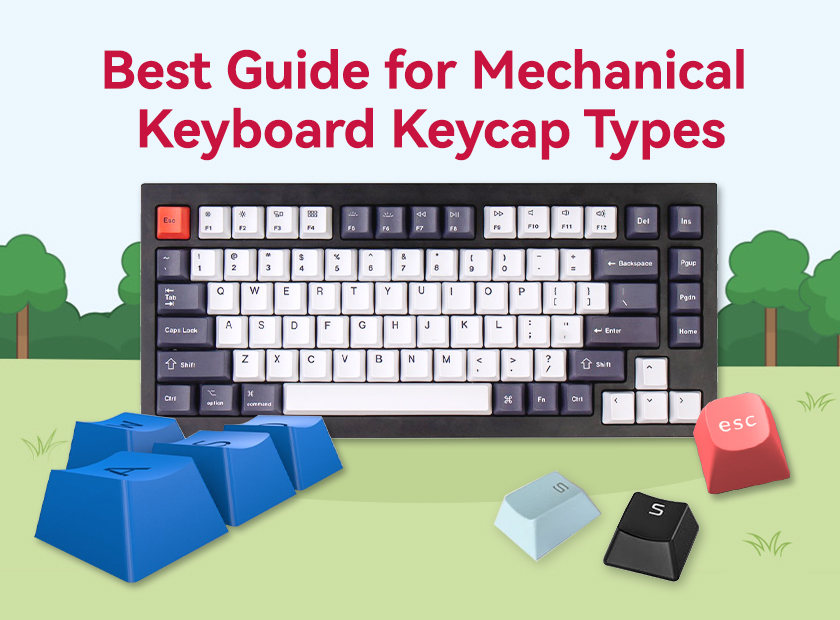
Whether you are a maker, a typist, a programmer, or a gamer, you may want to customize your mechanical keyboard with aesthetic keycaps, which are removable covers placed over a keyboard's key switches.
Mechanical keycaps are specifically designed to provide a comfortable and durable user experience while improving your typing efficiency. Available in many different shapes, sizes, and colors, a wide variety of keycaps have already hit the market for people to customize. But what exactly are mechanical keyboard keycaps? This guide will give you an in-depth look at the different types of keycaps and how they can affect your typing experience.
What are the main types of keycap designs?
The four main types of keyboard keycaps are OEM (Original Equipment Manufacturer), Cherry, SA, and DSA.
OEM Keycaps
Keycaps from OEMs, or Original Equipment Manufacturers, are the most common type of keycap and are usually made of ABS plastic and have a standard shape and color.
In OEM keyboards, POM keycaps are often used, which are well known for their durability and resistance to wear and tear. Most OEM keycaps have a textured, concave surface to help you place your fingers without seeing the keyboard.
SA Keycaps
Taller than most keycaps, SA keycaps are often thicker and have a more pronounced sculpted profile and spherical key surface. Because their sculpted profile can provide a more comfortable typing experience, they are often preferred by gamers and people who type a lot.
What's more, the unique look of SA keycaps makes keyboards with them stand out. Available in bright colors or with intricate designs, many SA keycaps can add a touch of personality to your keyboard.
DSA Keycaps
A DSA keycap is a low-profile keycap that is preformed to fit over a key switch; it has a uniform profile and is not contoured, making it easier to remove and clean than other keycaps.
However, DSA keycaps are always uniform across rows, making them less comfortable than other types of keycaps for some typists.
XDA Keycaps
XDA keycaps are a shorter keycap profile similar to DSA, but with a larger typing area. The consistent design of XDA keycaps allows users to move their hands quickly across the keyboard while typing. DSA keycaps are similar, but slightly shorter.
Cherry Keycaps
Cherry keycaps are high-quality keycaps designed to improve typing performance and durability. Cherry Corporation is a leading manufacturer of keyboard parts and accessories, and its keycaps are widely regarded as some of the best in the keycap industry.
Cherry keycaps are made from a material known as PBT, a thermoplastic that is resistant to wear and fading. Cherry keycaps are also available in a variety of colors and designs.
Other Keycaps
KAT (Keyreative All Touch): Angled, concave tops and sculpted rows. At 13.5mm high, these keycaps are often referred to as shorter, smoother versions of SA keycaps.
KAM: Essentially a uniform version of the KAT keycap profile, so all rows are the same shape and height.
MT3: Similar in height to SA keycaps, these sculpted keycaps have unique angles and sharper corners on their concave tops.
DOM: High profile, uniform keycaps with rounded tops, sometimes compared to snow globes. This profile is often used for craft keycaps.
G20: 7.6 mm low profile keycaps with angled tops and uniform rows.
Tai-Hao: Sometimes referred to as a taller version of OEM keycaps, Tai-Hao keycaps measure 14.88 mm tall.
MBK: Ultra low profile keycaps with scooped tops and uniform rows that are only 3.2 mm high.
What are the most common materials used in keycaps?
Most keycaps are made of one or two materials, depending on different situations and consumer demands, some manufacturers may choose other options.
ABS keycaps
ABS (acrylonitrile-butadiene-styrene) is a thermoplastic resin made from the combination of two monomers: acrylonitrile and butadiene. When combined, they form a material that is strong and flexible.
ABS keycaps are often found on lower-end keyboards because they are less expensive to manufacture. Light-colored ABS keycaps can yellow over time from sunlight and hand oils. They are also prone to developing shiny spots.
PBT keycaps
PBT (polybutylene terephthalate) is another synthetic polymer resin of the thermoplastic variety. Because of the superior quality of PBT keycaps, they are often used in custom and aftermarket keyboards.
PBT keycaps have a different feel than ABS keycaps, as they tend to be heavier and textured for a better grip, making them more popular with mechanical keyboard enthusiasts. PBT keycaps also don't yellow with age, making them more durable than ABS.
Rubber Keycaps
The rubber keycaps used on most keyboards are made of silicone, a heat-resistant, flexible synthetic polymer. Some keyboard enthusiasts prefer rubber keycaps because they feel they provide a more comfortable typing experience.
Compared to ABS or PBT keycaps, rubber keycaps tend to be softer and quieter, but rubber can be less durable over time, and rubber is also more difficult to clean.
The impact of mechanical keyboard keycaps on the typing experience
The keycap is a big part of how a keyboard feels to many typists. Different materials, thicknesses, and profiles can all affect how typing on a keyboard actually feels. If you use a thicker or thinner keycap, your switches will feel different, depending on the type of switches you choose. PBT plastic, for example, can have a textured surface that makes keys feel "grippy" under your fingers. ABS plastic, on the other hand, is smooth.
Keyboard enthusiasts even make their own keycaps from a variety of materials to get the right typing feel. Custom keycaps are a great way to upgrade your keyboard and make it more comfortable, and a great way to show off your personality if you play a lot of games, work on your computer, or generally type a lot.
How to choose the right keycap for you
There are so many types of keycaps available online, choosing a type that fits you the most is important, here are some tips:
1.Try before you buy
If possible, try different keycap profiles before committing to one. You can see if a friend or colleague uses the profile you're considering, visit retail stores, or contact the manufacturer to see if there's a way to take their keys for a spin.
2.See online reviews of different keycap performances
If you cannot get access to realistic keycap products, try to check them out online and see reviews from other buyers, tech geeks, makers and then you can have some conclusion about how to get the right keycap for you.
3.Make sure the keycaps are compatible with your keyboard
Make sure your keycaps are compatible with your keyboard. For example, you don't need a full set of keys if you have a tenkeyless keyboard, and you want to make sure you get the right keycaps if you have a 65% keyboard.
4.Consider Other Keycap Features
Keycap materials: Consider keycap materials to make sure the keycaps will last as long as you want them to.
Backlighting: Consider whether keycaps can make your keyboard's backlight function work; if you have a backlit keyboard, think more about whether they will let your RGB lighting shine through.
Tactile feel: Some keycaps have a smooth, glossy finish, while others have a textured, matte finish. Think about how the keys look and feel when you type.
The best keycap profile depends on your personal preference, so choose the one that feels most comfortable.
About Elecrow
Nowadays the market is saturated with a ton of keycaps offering a wide range of features. Sometimes choosing the right one for you can be overwhelming, Elecrow provides the guide hoping to make that decision a little less daunting for you.
These days, Elecrow is also offering a special Spring Season promotion for services related to mechanical keyboards Elecrow offers PCB manufacturing, PCB assembly, 3D printing mechanical keyboard cases and acrylic laser cutting service for mechanical keyboards, make your mechanical keyboards at much lower cost at Elecrow!
________________________________________________________________________________
Btw, Raspberry Pi boards are popular and versatile tools for makers. The latest addition to the lineup, Raspberry Pi 5, is the most powerful version yet. Why not upgrade your projects with this cutting-edge device? Join our Giveaway campaign for Elecrow fans to win a brand new Raspberry Pi 5. Don't miss out! Good luck!
Elecrow Monthly RaspberryPi 5 Giveaway

